The beginning
The first meeting to form a lawn bowling club in Millicent was held in the Millicent Institute Building (now the offices of a local accountant) on
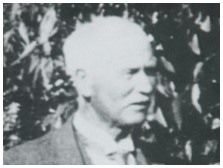
Thursday 7th February 1929. There were 8 men present. They were: A.K. Falconer, A. Ransom, H.C. Godson, C.E. Rice, A.R. Gordon, T.F. Stuckey, F. Kay and C. Willshire. Mr Stuckey was elected President and the secretary was Mr Falconer.
All of the above formed the first committee.
Subscriptions were set at 2 guineas (£2-2-0) or 2 shillings and 6 pence (2/6) each afternoon until the full subscription was paid. The greenkeeper was to be paid 10/- per week. The pre-existing Croquet Club agreed to rent two rinks on their green for £15 per annum to be paid to the Parent Club. It is unclear from the Minutes of the time whether the Parent Club was the Croquet Club, the Millicent Bowling club or some other overarching body.
Play was to commence at 2.30pm and continue for two hours.
In February 1932 the greenkeeper, Mr McCarthy, refused to work for 10/- (Ten shillings = 1 dollar) and a meeting was held at which it was agreed to pay 15/- per week. The financial statement on 5th September 1932
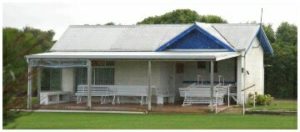
showed a credit balance of £1-10-1 after paying Mr McCarthy £1-10-0 for wages.
Four years later it was moved that Associate men members be invited and they would pay 1 guinea subscription. They could not partake in tournaments or Saturday afternoon matches.
Over the years more greens were added and the greenkeeper’s salary was increased to £3-10-0 in December 1941.
Building a clubhouse was discussed and planned over a long period. Committee meetings were held in a variety of locations including private homes, the Institute and the Millicent Hotel. It was not until 1958 that they were held in the clubrooms.
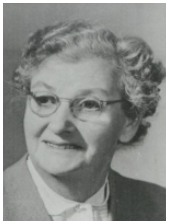
Until 1944 the bowling club was a men only club, but on 5th September 1944 a meeting was held to form the Millicent Ladies Bowling club. There were 5 women present. Mrs Altschwager was elected President and Mrs Holland was the first Secretary. All those present were elected to the committee. The opening for the new club was held on the 25th
November 1944 and conducted by Mrs Stuckey. At this time the greens were still shared with the croquet club.
Clubhouse planning
In April 1951 the men’s committee formed a building sub-committee to submit plans for a bowling clubhouse. In May 1951 Mr Thompson presented the plans to committee. The secretary was given the task of interviewing the District Clerk re the lease of some land for bowling and croquet. July 1951 saw the purchase of stone from Stratford Bros, and in August the plan for the clubhouse was adopted by committee if the croquet club was willing to assist. Labour for the construction of walls was engaged and a decision made to finance the building costs through the sale of debentures. By February 1953 things had progressed to the point where Mr J.L. Green of Sydney was asked to lay the foundation stone on 21/2/53.
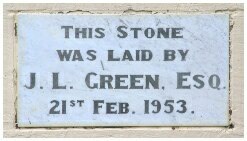
Due to the war it was difficult to buy roofing iron and some trouble was experienced in sourcing enough in November of 1953. December saw a working bee planned to put in the wooden flooring and this occurred after the roof was finished in January 1954.
Members had to wait until August 1954 before the conveniences were put in and the flooring completed. That must have been uncomfortable.
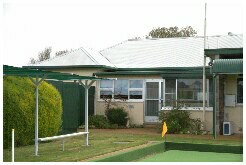
In August 1954 planning by the committee included a request for Mr C. Willshire to officially open the clubhouse while the ladies were asked to cater for the event on 27/11/54.
Furniture and the fittings took some discussion over the coming months. This completed what is now known as the Ladies’ end of the building. At this point it is unclear when the second stage of the building was constructed, that is the current dining and bar areas. More research is needed.
Since those early beginnings the clubhouse has undergone further development in size and facilities – good furniture, improvements to the kitchen and bar areas, carpets, air conditioning and a verandah.
The Greens
Following the early days when the green was hired from the Croquet Club, the Bowling club was successful in leasing Council land next to the croquet and over time developed three greens of their own. At the time of writing the dates are uncertain, although we know that the second green was built during 1963/4 and was first used in the latter part of 1964. Up until the early 1980s the three greens were Bent grass lawns. There were some excellent bowls played but the greens suffered from being too slow at the beginning of the season to too barren by the end of January. Attempts were made with different grasses: Tiff-dwarf couch on Greens A, B and C. Then Santa Anna Couch was tried on C green and then reverted two or three years later to Tiff-dwarf. None of these grasses were especially successful in the cooler climes of Millicent.
It was decided in 2002 to apply for a grant to the Dept. of Recreation and Sport for assistance in replacing the greens with synthetic turf. After receiving a $100,000 grant and with $140,000 of club money we installed two greens of synthetic sand filled grass (SuperGrasse). The club boomed as a result and the skill level of the players increased as the members practised and became more enthusiastic.
So successful was the change that in 2009 a third synthetic was laid on C green. This installation was helped by us gaining $50,000 as a water saving grant from the Commonwealth Government.
The night bowlers were enthusiastic as it meant that we could field 168 players every Wednesday night and everyone would play on a good green. The greens continue to benefit the club and now with three synthetics we could spread the wear and tear. In 2012 it seemed that we still had many years of life left in the greens.
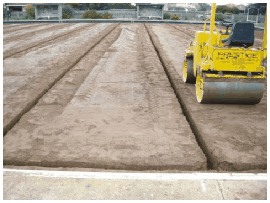
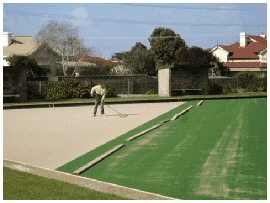
In late 2018 the oldest two greens were replaced after 16 years use and paid for entirely out of club savings. The club had been putting about $15-20,000 away each year in preparation for the replacements. A grant was applied for through the Dept of Recreation and Sport but unfortunately at a late stage the new State Government decided not to support the grant process for the 2018-19 year and our application lapsed.
 levelling underlay |
|
 laying new surface |
The legal entity
Legally the two clubs remained as separate entities until the Constitution of about 1984 saw the bringing together of the two clubs (Men and Women Clubs) under one umbrella club – The Millicent Bowling Club with an Administrative Committee and two facilities: the Men’s Facility and the Women’s Facility. There was a President and a Secretary of each facility and a Club President. Each facility ran the bowls activities of their gender while the Administrative Committee did the finance, building and grounds improvements and maintenance. Women members were called Associates, paid less subscription but had no voting rights.
In 2002 a new Constitution moved further towards equality of the sexes where the women became full members and paid full subscriptions and in every way were on the same footing as the men. The club moved towards a single Tournament Committee with a Chair and equal numbers of men and women. This process was very successful and avoided clashes and encouraged more joint tournaments. Gender based Facilities were abandoned.
The club now had one President and one Secretary although sub-committees had their own structures and were written into the Constitution.
Adjustments to the Constitution were made in 2007 to meet the requirements of new laws with regard to equality of gender in sport. The Constitution was simplified and the various committees were removed from the constitution and instead a full set of Bylaws was established to improve flexibility and a new Board of just 7 members was established. For a few years the Board was expanded by vote at the AGM to include the chairs of the major committees but from 2011 the Board has just 7 members with chairs being invited to either provide a written report or present a report at the start of a Board meeting.
Comment on this history page is invited and if any people know more about our history we urge you to contact the Publicity Officer so this page can be made as accurate as possible.

